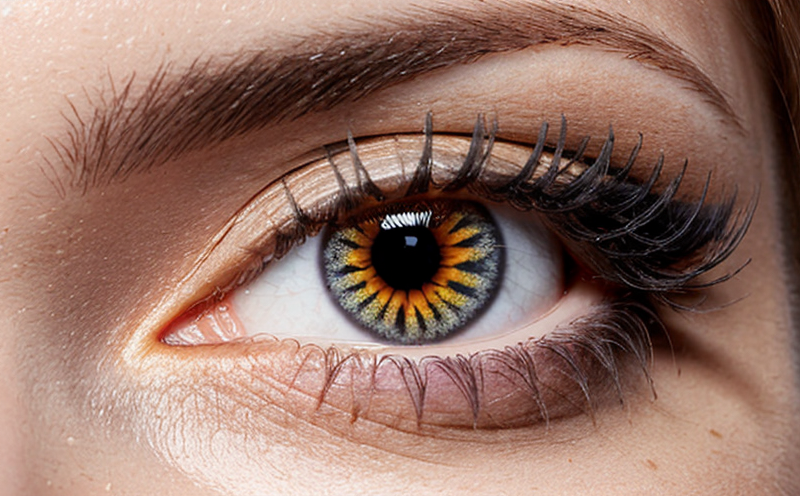In Vivo Ocular Irritation Testing of Cosmetic Ingredients
The safety assessment of cosmetic ingredients is a critical part of the product development process. In vivo ocular irritation testing provides essential data on potential adverse effects that may arise when cosmetics come into contact with the eye. This service ensures compliance with regulatory requirements and helps companies develop products that are safe for consumers.
In this procedure, a cosmetic ingredient is applied to the eyes of rabbits or guinea pigs (depending on local regulations) in controlled laboratory conditions. The objective is to observe any signs of irritation such as redness, swelling, discharge, or conjunctival hyperemia within specified timeframes. Results from these tests are then analyzed according to internationally recognized standards like ISO 10993-10 and OECD Guidelines.
The test duration varies based on the type of ingredient being evaluated but generally lasts up to seven days post-application. During this period, trained personnel monitor the animals closely for any signs indicative of irritation or adverse reactions. It's important to note that although in vivo testing remains necessary for certain types of assessments, efforts are continuously made towards alternative methods that can provide similar information without causing harm to living organisms.
Compliance with regulatory bodies such as FDA (Food and Drug Administration) and EU Cosmetics Regulation is paramount when conducting such tests. They specify detailed protocols regarding animal handling, housing conditions, and observation periods which must be strictly adhered to ensure accurate results and ethical treatment of animals involved in research.
The importance of this testing cannot be overstated; it ensures that new products entering the market do not pose significant risks to consumers' health. By providing reliable data about a product’s safety profile, companies can make informed decisions during formulation stages while also fulfilling legal obligations.
Applied Standards
The internationally recognized standards governing in vivo ocular irritation testing include ISO 10993-10 and OECD Guidelines for Testing of Chemicals. These guidelines provide comprehensive instructions on how to conduct these tests, including the selection criteria for animals, dosing regimens, observation periods, endpoints definition, and reporting requirements.
| Standard Reference | Key Provisions |
|---|---|
| ISO 10993-10:2018 | Establishes requirements for the evaluation of ocular irritation potential using intact eye test systems. |
| OECD Guidelines OC 4 | Provides recommendations on the selection of appropriate animals, dosages, and observation intervals for assessing ocular irritation. |
Scope and Methodology
The scope of in vivo ocular irritation testing encompasses several key aspects that ensure the integrity and reliability of the test results. This includes selecting suitable animals, preparing the cosmetic ingredients for application, applying them to the eyes, monitoring the subjects over a defined period, and evaluating any observed responses.
- Selecting Appropriate Animals: The use of rabbits or guinea pigs is determined by regional regulatory requirements since both species have similar corneal anatomy which allows direct comparison between test results.
- Preparation of Specimen: Before application, the cosmetic ingredient must undergo thorough preparation according to standard procedures. This may involve dilution if necessary and ensuring homogeneity through vigorous mixing.
Industry Applications
In vivo ocular irritation testing is particularly relevant for cosmetic companies developing new products or reformulating existing ones. By using this method, manufacturers can identify potential issues early in the development phase before launching their product onto the market.
- New Product Development: Ensures that newly formulated ingredients are safe to use without causing eye irritation.
- Formulation Optimization: Helps refine existing formulas by identifying components responsible for unwanted effects.
- Compliance Assurance: Meets regulatory requirements set forth by bodies like FDA and EU Cosmetics Regulation ensuring compliance with international standards.
| Application Area | Specific Benefits |
|---|---|
| New Product Development | Identifies potential safety risks early in the pipeline. |
| Formulation Optimization | Refines products based on empirical data from tests. |
| Compliance Assurance | Maintains regulatory compliance across international markets. |





